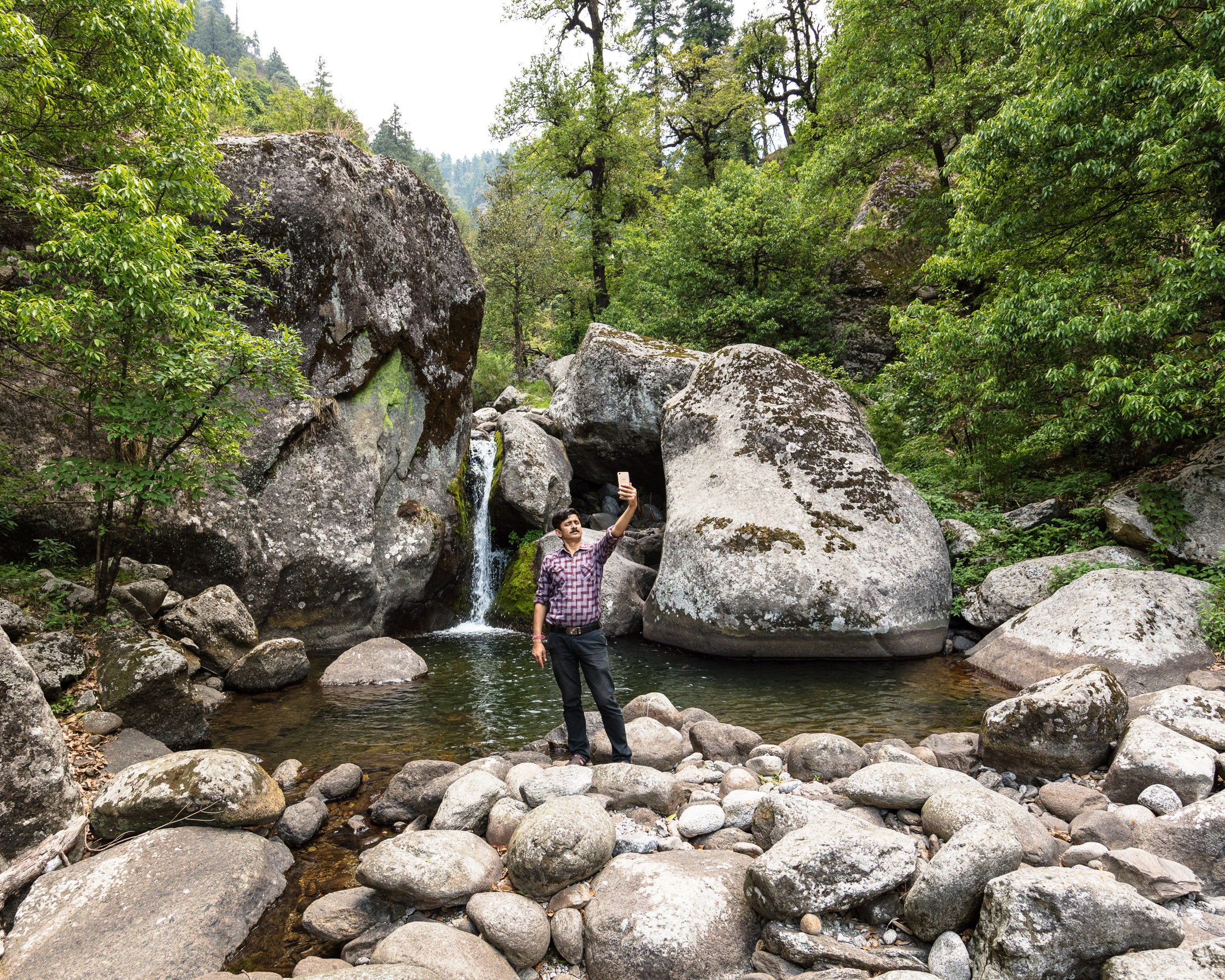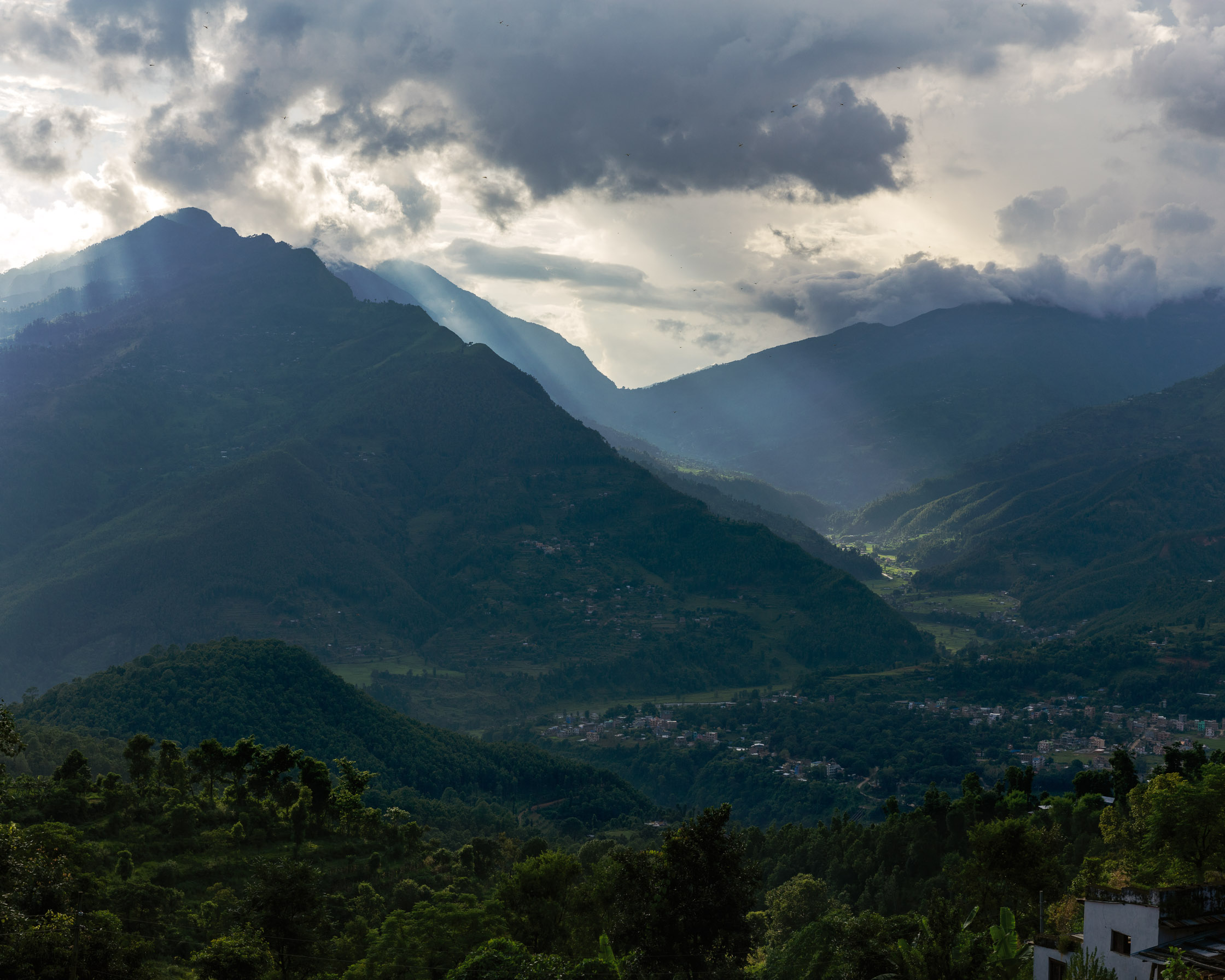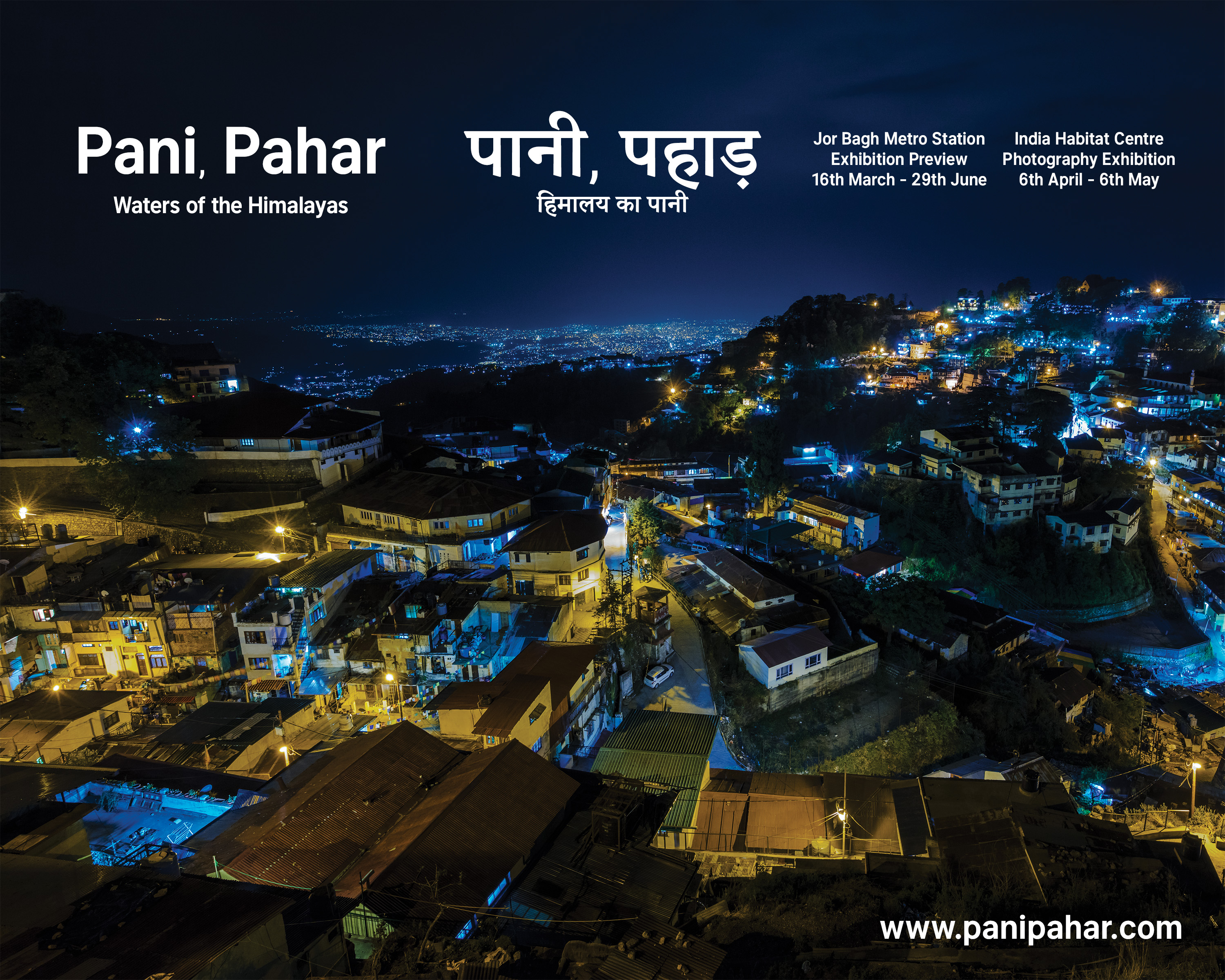Pani, Pahar
This collaborative research project explores the changing landscapes and escalating water crises of the Indian Himalayas. On the 17th of October a touring photography exhibit was launched as part of the University of Cambridge Festival of Ideas and India Unboxed program supported by the bespoke www.panipahar.com web platform. The exhibition has continued on to Kathmandu and Delhi with bilingual interpretation and timely press coverage.
The project combines academic research led by Professor Bhaskar Vira and Dr Eszter Kovacs at the Department of Geography (with collaborators in India and Nepal) with contemporary imagery by photojournalist Toby Smith and curated archival prints from the University Library and Centre for South Asian Studies. It has been the subject of original articles in the Guardian Environment Desk and the Hindustan Times.

In recent years, there has been a reduction in the availability of sufficient quantities of clean water for household use, due to a number of factors: changes in rainfall patterns; pressure on land-use; depleting groundwater reserves; and growing consumption demands, as migration and settlement patterns change across the Himalayas. Our work has tried to understand the connections between changes in land-use and management, which impact on the water bearing capacity of catchments in these mountainous regions, and the availability of water for a variety of users, including those living in the growing numbers of small towns, as well as more established uses for rural agrarian communities. The interdependence of people and ecological processes across these dynamic landscapes creates a complex and fascinating context in which we seek to understand the challenges of sustainable development, and associated tradeoffs in relation to the lives and livelihoods of those who inhabit this beautiful, and fragile, region.
We worked in six towns: Palampur and Rajgarh in Himachal Pradesh, and the colonial hill stations of Mussoorie and Nainital in Uttarakhand, all in India; and in Dhulikhel and Bidur in Nepal.
This exhibition presents four themes that became visible across the six small towns where we worked: change and transformation around water SOURCES; the growing visibility and rapid pace of URBANISATION; the ebbs, flows and characteristics of SEASONALITY that affect both social and ecological systems; and, the ways in which physical, social and political INFRASTRUCTURES are being built, transformed and consolidated at this time of rapid change.

Throughout the mountains, people are leaving rural areas in search of better access to basic services, markets, education and job opportunities, especially as agriculture-based livelihoods become increasingly precarious.
Existing towns in this region, established as colonial hill stations, have also seen increasing seasonal pressure due to growth in domestic tourism. Across the hills, these movements of people are resulting in changes in demand for water, and greater concentration of demand in small towns and urban settlements.
To keep pace with these changes, there is a need for investment in reliable and resilient infrastructure. Governments and donors have prioritised large scale infrastructure, such as pumping stations, hydropower facilities, and piped networks to supply water, and these systems are gradually replacing localised, communal practices of water gathering and distribution. As these new forms of water infrastructure develop, who gets water, how, and on what terms is also changing, with the poorest households often most vulnerable to the risks of being excluded because of scarcity, and the costs of modern provisioning systems.
The availability of water in these environments has always been highly seasonal, with greatest demand usually occurring at the height of water scarcity, in the summer months (which is also peak tourist season in the hills).
During the monsoon, the sheer quantity of water falling within very short periods of time frequently results in severe localised flooding events and often-catastrophic landslides, that disrupt the hills’ connectivity and threaten the lives and homes of its inhabitants.
Our research views towns as integral parts of a socio-ecological system, where urban demand and development has its counterpoints and consequences in rural spaces, amongst upstream communities, and forests, agriculture and wider ecological systems. These lenses allowed us to identify the difficult choices and tradeoffs that are required as part of planning for urbanisation and water provisioning in these spectacular mountainous regions. This exhibition showcases some of the compelling images which narrate these stories of dynamism and change, and we look forward to your engagement with the sites – and sights – of our work.

Notes on Project Partners and Background
This project was partly funded with support from the Ecosystem Services for Poverty Alleviation (ESPA) programme, under a targeted Impact Activity Fund grant, as a follow up to an earlier ESPA-funded research project,
India Unboxed is a programme of exhibitions, events and digital encounters within the museums and the city of Cambridge. Rooted in Cambridge collections, the programme explores themes of identity and connectivity for audiences in the UK and India. India Unboxed enables contemporary and critical engagements, celebrating the diversity and plurality of the subcontinent and its unique relationship with the UK.
Toby Smith is a contemporary photographer who works internationally on projects concerning landscape, environment, industrial and science stories. Toby was the Artist in Residence of the University of Cambridge Conservation Research Institute for 2015/16. Toby continues to be associated with UCCRI and the Cambridge Conservation Initiative for 2016/17 as an Associate Scholar.
Photographs from the Royal Commonwealth Society collections in Cambridge University Library provide a fascinating and detailed insight into life across the Commonwealth. They range from photographs of important constitutional events in the creation of nation states to images of domestic life, schooling and hospitals. They document dramatic changes in land use, industry, commerce and transport, the growth of towns, cultural and religious activities, but also the lives of many thousands of ordinary individuals.
The Centre of South Asian Studies is a renowned cross-disciplinary research centre open to students and scholars from across the University of Cambridge and to researchers from around the world.